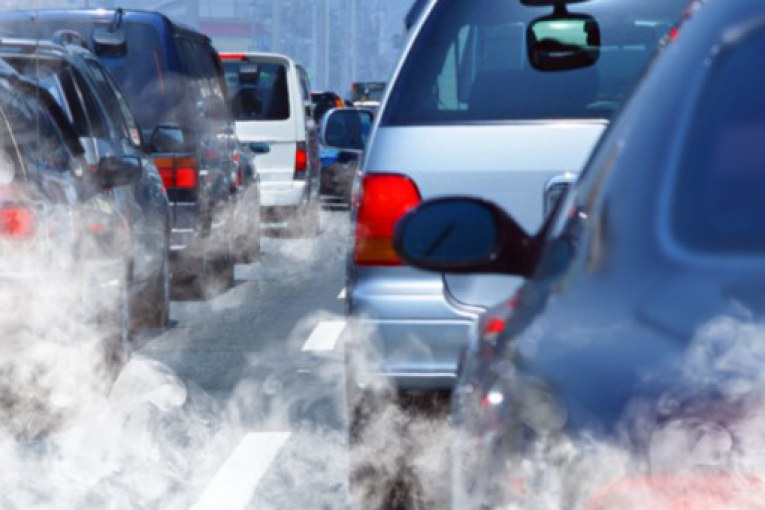
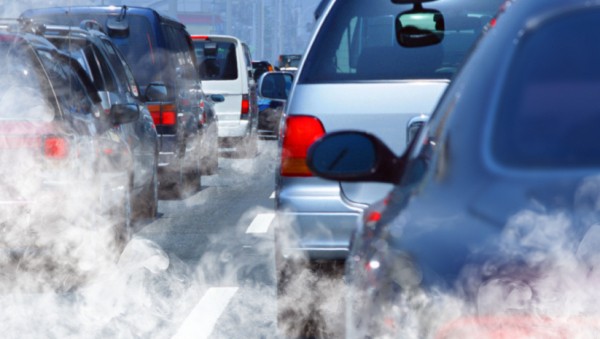
By David M. Greenwald
Executive Editor
Sacramento, CA – The record heat of last week was a good reminder to Californians what they are up against—we saw record temperatures and a strained but not broken electrical grid.
At the same time, California has taken real steps—aggressive steps—to address climate concerns. Unfortunately, while California has taken clear and concrete steps to address climate change, the rest of the nation and much of the rest of the world lags behind.
We have already seen the early impact of climate change—rising average temperatures, destructive fires, higher sea levels, severe drought, and floods.
In a release from Assemblymember Jesse Gabriel, whose bill AB 1384 was signed into law by Governor Newsom, empowering “California’s state agencies and departments to implement comprehensive climate adaptation strategies that outline governance, goals, and metrics to ensure the state meets its climate adaptation goals,” he cited the Fourth Climate Change Assessment.
Findings show that our average daily temperature is projected to increase by five to nine degrees. By the year 2100, the water supply from snowpack is projected to decline by two-thirds. By the year 2050, California’s agricultural production could face water shortages of up to 16 percent.
Additionally, the frequency of extreme wildfires would surge, and the average area burned statewide would increase by approximately 77 percent. Already, many lives and whole communities have been lost or destroyed. Important species, trees, agriculture, and entire ecosystems which Californians depend on for vital resources are on the brink of collapse.
Columnist Dan Walers noted that the heatwave generated a record demand of more than 52,000 megawatts that hit 80% of the state’s electric power system and “was a successful stress test for the grid.”
He also noted that the state legislature passed “legislation to speed up California’s conversion to a carbon-free electrical grid by 2045.”
SB 1020 will require that, by 2035, California get 90 percent of its power from renewable sources at the same time the state is scheduled to end sales of gas-powered vehicles; and 95 percent by 2040 while retaining the 2045 deadline for converting to a carbon-free electrical grid.
“Climate scientists tell us that that Tuesday’s experience, including elevated demands on the grid, will become more common,” Walters writes. “Meanwhile, California theoretically will, in just 13 years, more than triple its proportion of renewable power production.
“But there’s more. Power demand will not only increase due to climate change, but because California will be shifting everything it can from hydrocarbons to electricity.”
Walters worries that the state needs to be better be able to store solar power, writing, “The state now has a few battery banks to preserve solar power but scaling up will be enormously difficult and expensive and at the moment there are few alternatives.”
He is skeptical that the state can meet the demand.
“Is California really up the task that the new legislation mandates, a very expensive, relatively rapid conversion and expansion of this immensely complicated and absolutely vital thing we call the grid?” he asked. “Recent history is not reassuring.”
Improving technology will help. Reducing the reliance on fossil fuels both for driving and electricity generation will help, but as an article in Wired points out this week, it will take more than that to save the planet.
Wired points out the move by California to ban new gas-powered vehicle sales by 2035 “will reduce emissions by nearly 400 million metric tons between 2026 and 2040, the state calculates…”
Wired also points out, “The ban is the first such move in the US and among the most aggressive climate regulations in the world.”
What may be less noted in media reports, “an auto industry already excited about electrification seems to have taken the whole thing in stride.” As a result, “Experts say the goal should be well within reach, too; after all, more than 16 percent of new cars sold in California this year were zero-emission.”
But there is also bad news.
Wired notes, “California still has lots of work to do, because electrifying cars alone won’t be enough to stave off the worst of climate change.”
In a draft report released this summer, “the state’s Air Resources Board turned to another policy needed alongside banning gas cars: reducing the number of miles that Californians drive every year.”
“Even with improvements in clean vehicle technology and fuels,” the agency wrote, “it is still necessary to reduce driving to meet state climate and air quality commitments.”
So there it is.
One reason that driving less is going to have to become a huge policy is that the switch to all-electric vehicles and the switch to renewable energy is not happening overnight.
Wired notes, “Despite new purchases and old cars getting scrapped, the average age of cars on US roads keeps increasing—today, the average is more than 12 years. Existing gas-powered cars will stick around long after they’re banned from new car lots.”
Plus, “there are plenty of emissions associated with cars and driving that don’t come out of a tailpipe, including manufacturing the vehicle in the first place, and the stuff that cars drive on. Building and maintaining just one lane-mile of highway creates some 3,500 tons of carbon emissions, according to one analysis.”
Moreover, “Despite its target, California has not so far managed to significantly reduce driving. In 2019, the last year of strong data, Californians were driving and riding in cars more, as measured by annual vehicle miles traveled per person, than they were 14 years earlier. They were carpooling, biking, and walking to work less. And fewer people were taking the bus or train, a pattern that has worsened since the beginning of the pandemic.”
By 2035, “the state aims to reduce the miles traveled by vehicle by the average Californian by 19 percent, compared to 2005. But preliminary data suggests that by 2019, that number had moved in the opposite direction.”
Guess what this links up with—housing and jobs.
Wired notes, “People won’t stop driving if the state builds more places to live that are closer to where people want to go, like commercial strips with lots of offices and shops. But they might take fewer trips, meaning they’ll drive less.”
As we transition toward an economy with more people working from home, that might reduce VMT as well.
Wired notes, “California has passed laws to increase the supply of housing, including some that allow property owners to build more units on a single lot. But those new rules have met opposition from some cities, and building new housing takes time.”
Further, “officials in California and other parts of the world have also experimented with policies that both make it easier to live without a car and make it more annoying to drive one.”
In a little Davis connection, Wired quotes Susan Handy at UC Davis.
“What we’re trying to do is to get people to drive less, but for a lot of people, that’s just not very possible,” says Susan Handy, a professor of environmental science and policy at UC Davis. “What we need to do is rebuild and adjust our communities so that it becomes just possible to drive less,” she says.’
The article cites the need to improve public transit, but also “building safer infrastructure for people who’d rather walk or bike or scooter.”
They add, “Davis, California, where Handy lives, has a few natural advantages. It’s usually pretty nice out, and the terrain is rather flat. But the city also has well-marked and -maintained bike lanes and lower speed limits, particularly around its university campus.”
Bottom line, moving to renewable energy and away from gas powered cars are important, but we also need to drive less.




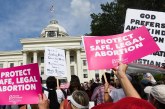
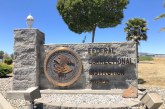
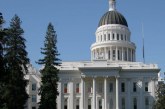
There are a lot of people that physically are unable to walk/bike/scooter to get around town. It is simply unrealistic to locate most workplaces close to where people live. People work in all kinds of jobs and prefer to live in different kinds of communities. What about all of the couples that work in different professions? What’s really needed is a complete reimagining of urban life. Mass transit should be an integral part of communities. Mass transit needs to service every block, not just every few blocks. That’s really the only path towards largely eliminating driving. Mass transit must also encompass freight delivery to remove the need for trucks.
Many people who work for the state in Sacramento have had work from home since the pandemic. Making them return to the office for no good reason will be a huge step backwards.
Where does our weather/climate come from? West of CA… China, North Korea (and South)…
So draconian measures taken in CA will benefit primarily those in NV, AZ, UT, CO, NM… yet China, Asia in general, does almost nothing…
We will be the ‘shining example’ (via major sacrifices, $$$’s) and others can sit on their proverbial hands and do nothing (or lame, token efforts)…
A Messiah complex, as it were. I’m all for reasonable efforts, but there is no ‘quid pro quo’ from the rest of folk (the world) that actually affect our climate, and weather… this disturbs me… 100% of effort, cost, sacrifice, ~ 0.1% of benefit… “California “burden”?”
Of course white ‘privileged folk’ should make sure that in CA, they pick up any costs/inconveniences/sacrifices to shield those ‘of color’ and those with lesser resources, from the same… it is only social justice, reparations, collective ‘guilt’ that dictates that’s what we should do.
Very insightful article, many levels… I “get” the drift…
Hand wringing about what others aren’t doing is a poor excuse. For many years the USA was the world’s largest generator of greenhouse gasses. I think we are second now behind China but on a per capita basis I think we are still number one. So what we do and don’t do has a big impact. Still I wonder about the cost effectiveness of some of the proposals being put forth. The whole green waste thing seems to me like overkill and I wonder about enforcement. Are we are going to have garbage police inspecting our trash? Meanwhile there are thousands of old oil wells leaking methane. Same with jet planes. One long flight generates more carbon dioxide than a family who stays home generates in a year.
Renewable generation might not be large enough to meet the goals but there is a simple solution, if we don’t make it we keep on adding generation until we get there.
Well, at least we’re still “number one” in something.
However, I believe we’re also still “number one” in military strength as well. But of course, we’re not supporting any wars against Russia (without actually declaring it as such).
Increasing density will not cause people to move from already-sprawling developments. In fact, they’re continuing to build more of them.
Meanwhile, San Francisco’s population has dropped by more than 6%. And yet, San Francisco is the “poster child” for dense living within California.
If you want people to drive less, increase the cost of gas. Now there’s a popular campaign slogan. And start charging electric vehicle owners “their share” of road construction and maintenance costs. (Which, as David noted – creates greenhouse gasses, itself.)
And yet, we have a governor who wanted to “reward” people for owning two cars.
George Carlin had it right, regarding how politicians ultimately reflect the populace – though he said it in a more “colorful” manner. Something along the lines of, “maybe it’s not the politicians who “suck”. And given that he wasn’t booed off the stage, maybe his audience (at least) understands the point he was making.
In the meantime, you’ll probably have to try to pry the steering wheel out of our collective “cold, dead hands” (to paraphrase Charlton Heston).
Locally and recently, the three or four most dramatic differences regarding transportation and climate change have been homeworking due to COVID which is sort of the flipside to shunning public transportation due to COVID, and the rejections of DISC.
The best thing for California’s political managers to do is to continue to push emission regulations for vehicle manufacturers even as other policies work against this. California is huge and cannot be wielded in more than a sloppy fashion. These regulations put pressure on the rest of country to change… a bit.
I lived in L.A. for about two decades as a child and went to school next to a freeway – both during my young, lead-absorbing years. I’ve been hit and moderately-injured by a motor vehicle in a collision that was entirely the fault of the other party (everyone can always be more cautious… a good campaign against victim-blaming in collisions in the public ROW would show a person crawling back into their mother’s womb, saying “There, are you happy now?)
I was appointed to the BTSSC and told to be “nice to staff”. I was kicked off the BTSSC partly because I spoke truth to the Council’s garbage actions on transportation (there are good policies they ignore). I now live on the periphery of Davis, in a nice apartment complex with very poor bicycle parking facilities. I don’t live in the bike-friendly part of Davis. El Macero shopping center frequently has a nearly 0% bicycle modal share. Cycling to Pioneer Elementary was improved by the current iteration of Mace Blvd but the Council is re-directing a design that will likely make no more improvements, or will do the opposite.
The new connector from Olive to Pole Line was built more like an ADA-ramp and is too steep and otherwise poorly-designed for cycling, especially for less fit people/those without e-bikes. The streets are being paved too wide which increases speeds, and then speed bumps are added that also slow down people on bikes even though threats of cycling to walking are extremely minimal in Davis. This creates cyclist by-catch. Gloria Partida posts the recent construction of the west end of 2nd St as an example of her fiscal process in creating the re-paving program even though it was not paid for by the city. The other end of 2nd St had a much worse repaving job and the bike lanes on this fast artery are filled with weed overgrowth. That may also be partly the responsibility of Adam Morrill (wearing his staff hat) but anyway he doesn’t inspire me with his wish to build a parking structure at Davis Depot which he says will pay for itself, never mind the traffic impacts on local streets. It’s been policy for years to remove slip lanes/free right turns but opportunities were missed (e.g. F and W. Covell and Mace/Alhambra) in connection with significant projects. We had no experienced traffic engineer for five years… in sum there’s not really been anything new and innovative or game-changing in transportation in Davis since I’ve been here (2016), though it was nice to have a bike share system despite its misses due to generic and discriminatory design, and it seems like Unitrans is run well. Morill is right about infill, and above Susan Handy is right-on about the same issue. But the real savior of climate-related transportation effects is UC Davis, more specifically the existing design or much of it, the relatively expensive and sometimes awkward vehicle parking, the great but sometimes congested internal cycling network with some pinch points that the university is not able to sort out (e.g. La Rue by ARC) and – on the other hand – it’s been nearly four months since a student riding a bike was killed by a UCD worker driving a trash truck, with multiple witnesses and video, the chief of UCD police calling it a “tragic accident” (language that is not used by DPD or PW staff, to their credit)… nearly four months with an investigation led by DPD with no results, now the Regents sued by the victim’s family, little follow-up and seemingly no pressure in the media to go after the Regents and indirectly the Chancellor. Cycling not to campus and not to elementary or junior high is minimal.
It is really hard to drive less – to paraphrase Dr Handy – when there are no substantial improvements in many areas that would provide alternatives, practically or as inspiration.
And then there’s the construction on I-80 between Vacaville and Fairfield that appears to add another lane each way instead of considering all of that space for a rail line. Humans are doomed.
A rail line along 80 is unnecessary duplication when there is already one between Auburn and San Jose.
Yes, I get that. Just airing my frustration that we seem to be pushing headlong continuing the same mistakes only bigger and better ones.
And yes, David…. we know you practice what you preach… only electric cars in your family, and all electricity generated from non-carbon sources… and no carbon fuels involved in the manufacture of any of those electric sources… and the vehicles you use were produced with zero carbon pollution…
You never drive kids to school… they bike or walk… and the bicycles were made with no carbon sources… neither you nor anyone in your family drive gasoline, or hybrid vehicles… and you drive either not at all for any reason…
Yes, you have the higher moral ground. Good example for all… gives you the right to dictate to others… very progressive of you.
Don’t underestimate how California policies have led the nation and even the world. The dramatic reduction in vehicle pollutants is largely attributable to the California standards first adopted in the late 1960s. California has pushed those since. The vast expansion of solar and wind generation comes from California aggressively pushing renewables starting in the early 1980s. The rapid drop in solar costs came from California signing a large number of power purchase agreements around 2010. The building energy efficiency standards started in Davis in the 1960s and were then incorporated by the California Energy Commission. Appliance standards were first adopted by the CEC in the 1970s. Recycling began in Davis in the 1960s. Bike lanes were first installed in Davis in the 1960s. And there are many more California examples. What we do here does eventually spread across the U.S. and then the globe.
That said, the only way that we will reduce the amount of driving is to increase housing density and spread commercial enterprises across the neighborhoods. Go to the East Bay to see a community that accommodates less driving. We’re far from that. But change will require overcoming much political resistance from those who don’t understand their cognitive dissonance.
Wow – I didn’t realize that Davis itself is responsible for saving the world. Probably because of all the super-smart people, and whatnot.
Do they know that in China? Hell, do they even know about that in Sacramento, Elk Grove, Roseville, Folsom, etc.?
Oakland, for example? I was just reading about the school closures, there.
Yes Ron, the world always looks to Davis for answers and survival.
Belittle what Davis has accomplished (since you don’t live here), but its influence has been truly manifest. California has been the trailblazing entity in finding ways to save the environment and many of those driving those policies have been Davis residents or UCD alumni. There is a direct lineage from Davis to state policies to U.S. policies.